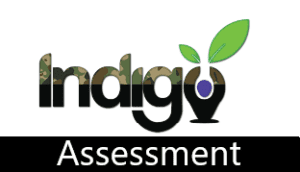When we start a new role, we want to be successful. Success means different things to different people. Some people focus more on the work that needs to be done and others focus more on developing the relationships.
Assessing your new environment is critical to become effective in your new role, which will help you develop future opportunities. As I’ve learned to become more effective in new client environments, here are four things that would have made my learning experience easier.
1. Balance Results and Relationships
Most of my career, I was rewarded for delivering results. In the Navy, the culture was predominately mission focused and concentrated on the work needed to make the ship successful. As I transitioned into my consulting career, I was able to develop rapport quickly and was trusted to act with the client’s interests in mind. I became accustomed to being able to acclimate quickly, influence others, and do what I felt was most important to be successful.
When faced with clients who were more focused on developing relationships and needed more time to develop trust, I struggled because I felt there was so much more the client could do to enhance the organization. What I failed to realize was that by not developing the relationship, I reduced my ability to influence.
For people you will report to and work with, seek to understand what they value. Do they value relationships more or do they value results? Don’t miss opportunities to build relationships with others because you’re too busy working on tasks that aren’t critical. Conversely, don’t spend too much time getting to know others when your leadership needs you to produce for them.
What is the appropriate balance for your new situation?
2. Understand Expectations and Interests
Many of us ask about what our managers expect of us. Some managers won’t explicitly share their expectations, goals, and how they prefer to delegate tasks, make decisions, and manage risk. Imagine how your manager and your colleagues feel when you are acting with their best interests in mind.
Schedule a preliminary meeting with them to learn what motivates them and what they would view as a successful transition for you. Below are some questions to ask. Be sure to tailor them for whether you are talking with your manager or your colleagues.
- What are your goals for our team?
- What are your professional goals?
- What do you expect for me to accomplish in the first 90 to 120 days? What can I do to help you be successful?
- What characteristics does a successful employee/teammate exhibit?
- How do you prefer to delegate tasks/work together?
- How do you prefer to make decisions? (e.g. gut, data, stories, emotions)
- What risks concern you?
Some of the questions above may also help you determine fit when you are interviewing for a new position with a prospective manager.
What other questions can you ask to learn about your manager’s and colleagues’ interests and expectations?
3. Tailor Your Communication Style
Some people will often communicate to others the way they prefer to receive communications. After all, we are brought up to treat others like we want to be treated (i.e. the golden rule). Dr. Tony Alessandra has a great communication framework called the Platinum Rule to help people communicate with others the way they like to communicate. Using his framework, one is able to learn their dominant communication style (open or guarded and direct or indirect) and assess how others prefer to communicate. He also offers tips on how to alter one’s communication style depending on which is the dominant communication style of the other.
For example, have you ever witnessed someone trying to build up to their main point when their audience wants to know the bottom-line up front? Conversely, have you seen someone try and rush through to the recommendations when their audience wants to know the methodology they used, the data they collected, and assumptions they made?
How can you alter your communication style to bridge the gap between people you are working with?
4. Acclimate Before Making Changes
The point here is simple. Make sure you understand the organization’s culture before you offer drastic changes. Try to avoid saying, “When I was with…, we used to …”
How will you know when the right time to propose changes is?
Article was originally published on July 20, 2015 on LinkedIn.






